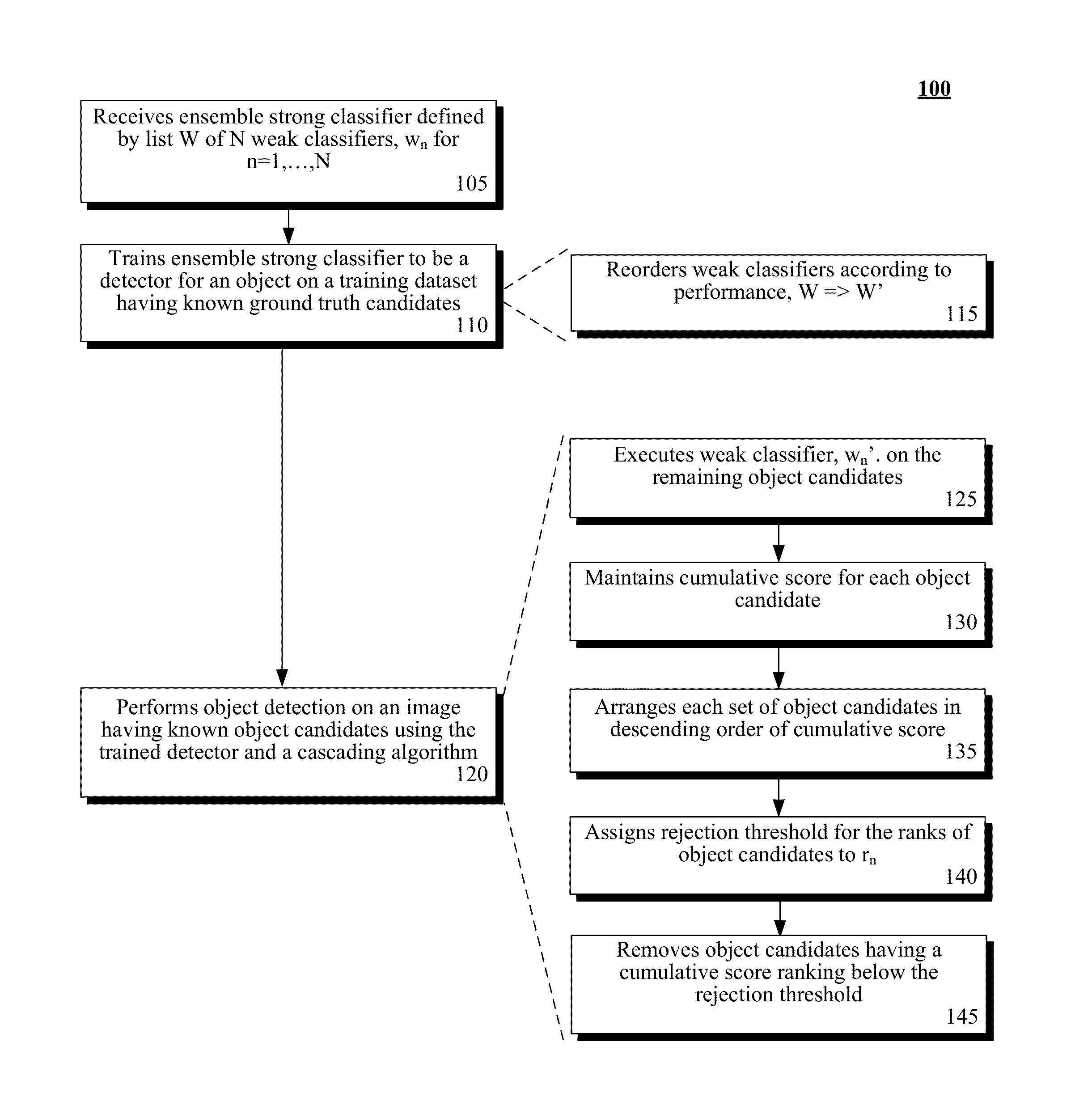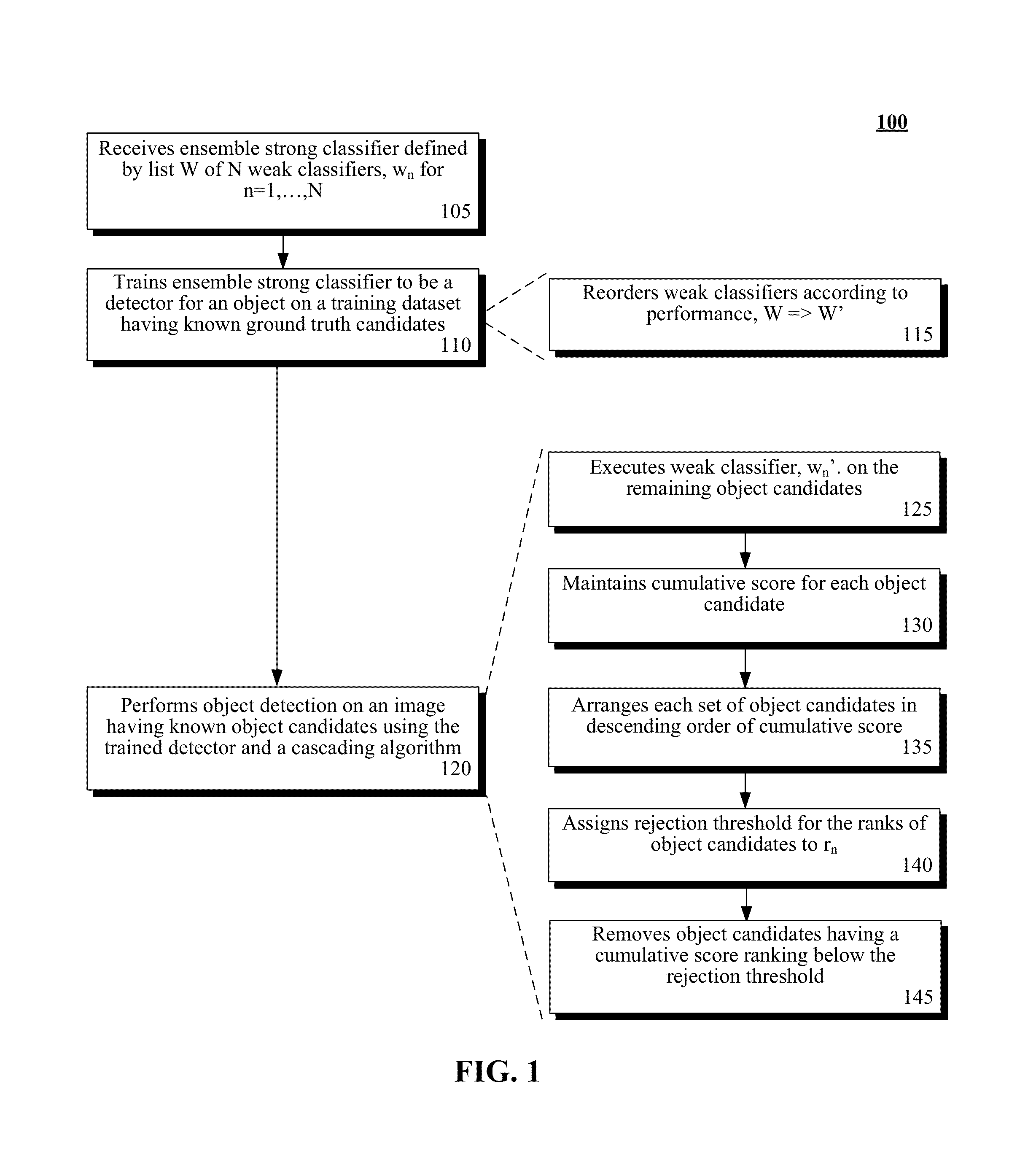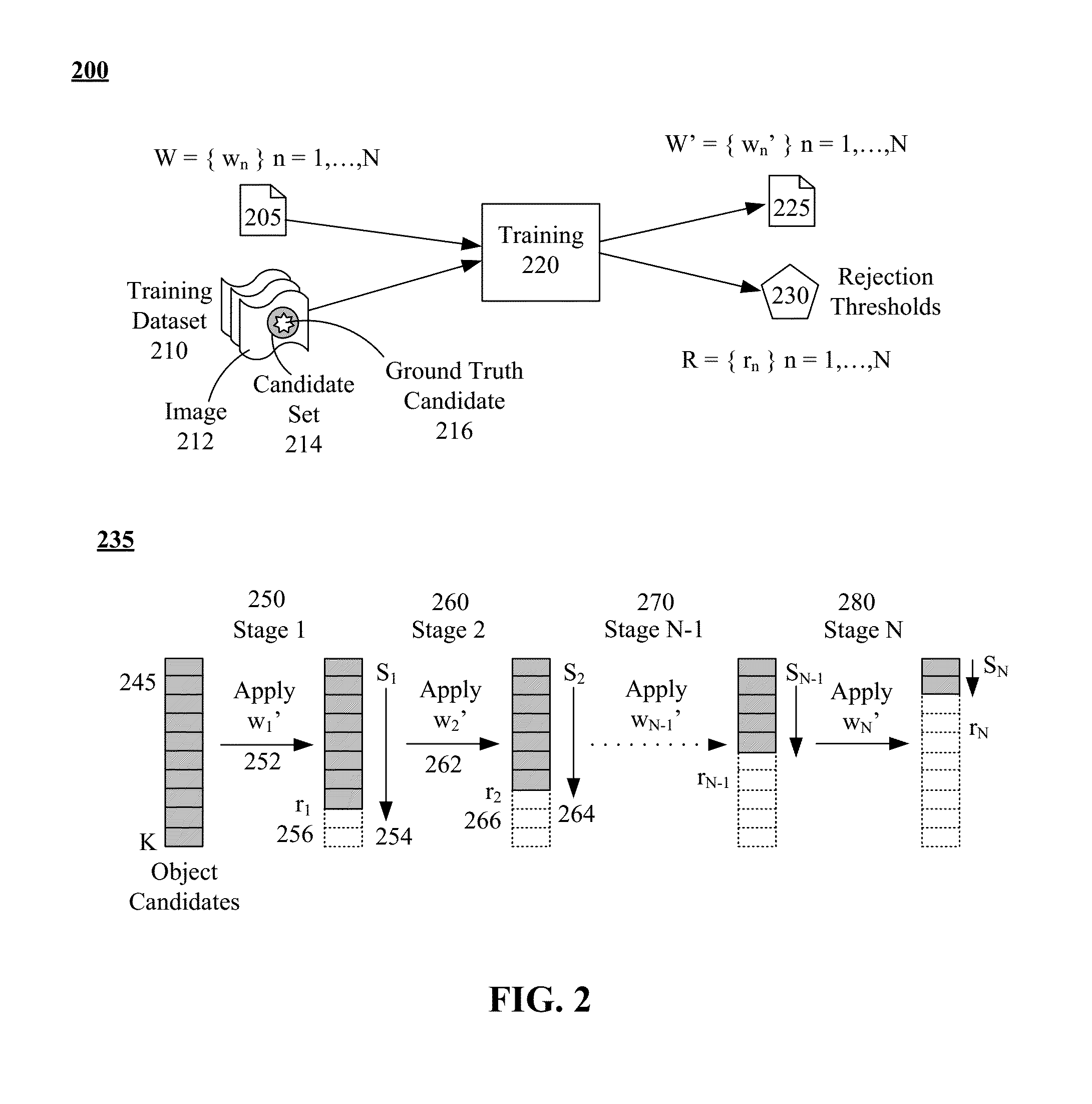Object detection approach using an ensemble strong classifier
an object detection and classifier technology, applied in the field of object detection, can solve the problems of increasing the computational cost without increasing accuracy, increasing the accuracy and speed of object detection, etc., and achieve the effects of reducing the size of the set of object candidates, reducing the computational cost of object detection, and reducing the acceptance of negative object candidates
- Summary
- Abstract
- Description
- Claims
- Application Information
AI Technical Summary
Benefits of technology
Problems solved by technology
Method used
Image
Examples
Embodiment Construction
[0010]The present invention discloses a solution for reducing the computational cost of using an ensemble classifier and a cascading algorithm for object detection. The ensemble classifier can be defined by a list, W, of weak classifiers in a default order. The ensemble classifier can be trained to be a detector for an object using a training dataset that has known ground truth candidates. As a result of the training, the weak classifiers of the ensemble classifier can be reordered in a list, W′, according to performance. The trained detector can then be used in conjunction with a cascading algorithm to detect the object in a new image. In each stage of the cascading algorithm, the rejection threshold of the stage can be applied to ranks of the remaining object candidates.
[0011]As will be appreciated by one skilled in the art, aspects of the present invention may be embodied as a system, method or computer program product. Accordingly, aspects of the present invention may take the f...
PUM
 Login to View More
Login to View More Abstract
Description
Claims
Application Information
 Login to View More
Login to View More - R&D
- Intellectual Property
- Life Sciences
- Materials
- Tech Scout
- Unparalleled Data Quality
- Higher Quality Content
- 60% Fewer Hallucinations
Browse by: Latest US Patents, China's latest patents, Technical Efficacy Thesaurus, Application Domain, Technology Topic, Popular Technical Reports.
© 2025 PatSnap. All rights reserved.Legal|Privacy policy|Modern Slavery Act Transparency Statement|Sitemap|About US| Contact US: help@patsnap.com



